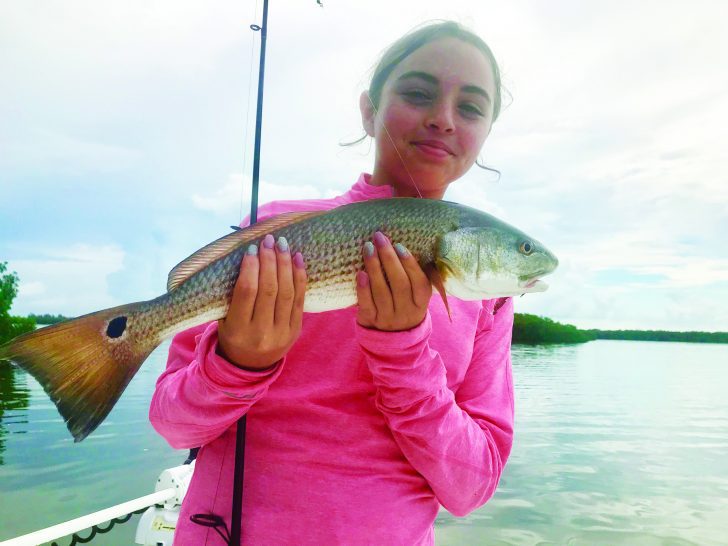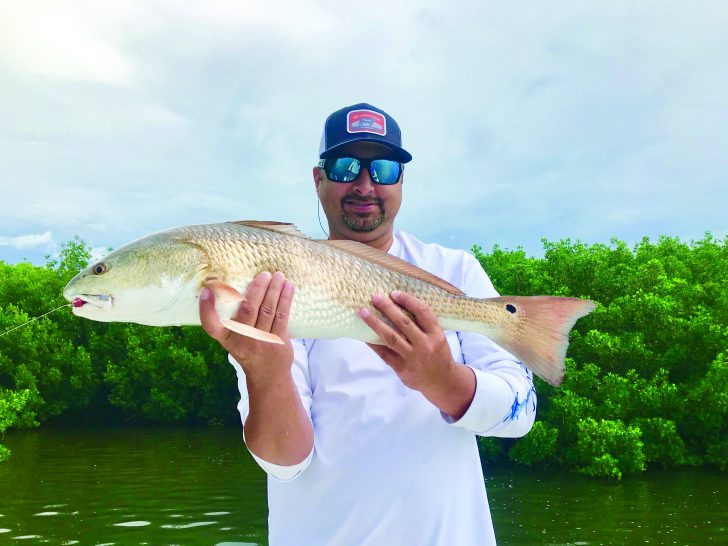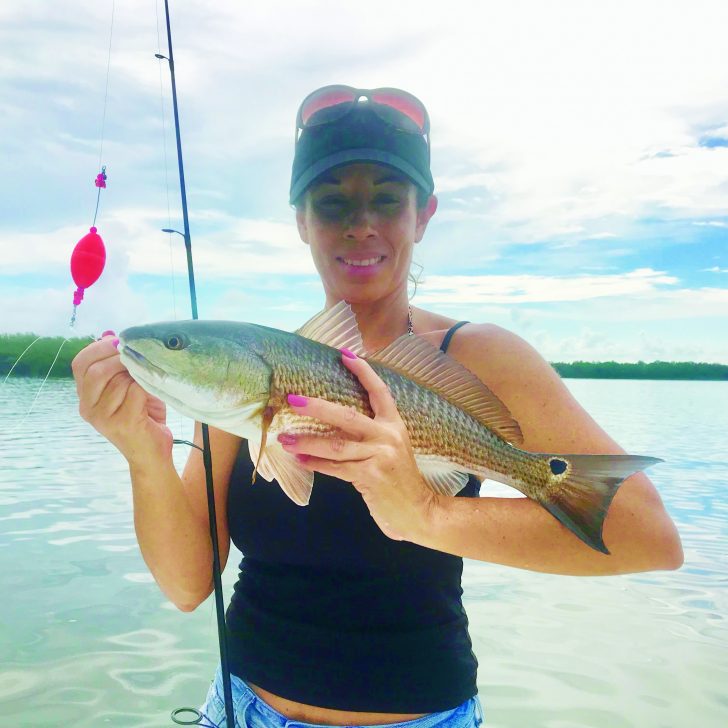by Captain Terry Fisher

The waters now house a variety of species and numerous schools of them for the catching. Some are still available for harvesting while species such as snook, redfish and seatrout are closed to harvest, but still provide the opportunity for catch and release. FWC closed their seasons due to last years Red Tide and algae blooms that swept our estuaries and offshore venues. However, those days (at least for now) appear to be behind us. I applaud that decision and even though these species are showing up in better numbers again, it is my hope that FWC extends their closures past next year to sufficiently rebuild the fish population to higher levels, that can sustain the additional fishing pressure as more boats and more anglers than ever before continue to enjoy our waters.
During these summer months I love to take family charters to the deeper grass flats to catch seatrout, Spanish mackerel and other species, either on incoming or outgoing tides. So long as the water is moving the bite is usually very good. I use live shrimps under popping corks with light spinning tackle. This is an easy and effective way for anglers of all ages to experience hooking and catching lots of ‘Ocean’ fish on their own. My biggest decision this time of year is ‘how many hundreds of small shrimps do I purchase’ for this type of charter.

The inshore bite on the deeper flats has been really good for seatrout, Jack crevalle and ladyfish, with by-catches of Spanish mackerel, permit and small sharks. Of course, expect those ‘Dog Days of Summer’ catfish to join the party. The redfish and snook bite have been good in the locations mentioned in the preceding paragraph, however locating them is the key.
Offshore, one may expect to have spotty success on the close inshore reefs of Sanibel, Captiva, N. Captiva and Cayo Costa Islands. Shrimps, baitfish, squid on 20-30lb. leaders and 2/0 circle hooks should land sheepshead, mangrove snapper (gray snapper) and lane snapper larger than those inshore. The bigger grouper, snapper and porgy reefers will be found in deeper waters of 45 to 100 feet. Heavier equipment with larger circle hooks and 40lb. leaders should be considered further offshore. Consider drifting the deeper waters as opposed to anchoring to locate fish.

When considering fishing offshore during the ‘Dog Days of Summer’ be certain to monitor weather conditions so as not to get caught in severe weather and high wave conditions. If several days of westerly winds have prevailed, delay going out until the energy level in the gulf has subsided, as the bite will be negatively affected until things settle.

